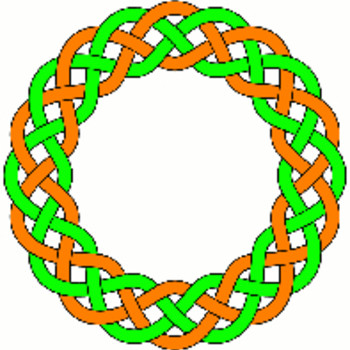You are searching for values of #u# that satisfy the given equation.
You might note that there is a constant term (here "1"), a term comprising #u# with some coefficient (here, the coefficient is "7") and a term comprising #u^2# with some coefficient (here, the coefficient is "10"). You might now recognise this as a "quadratic" equation.
Just as square numbers have two roots, you can expect two values of #u# that might satisfy this equation (in what appears to be a cheat, there might be only one value of #u# that satisfies this equation but this is regarded as one value "repeated" so that there are still two solutions).
To make progress, it is convenient to rearrange the expression so that it matches the form
#a u^2 + b u + c = 0#
So,
#7 u - 10 u^2 = 1#
implies (moving all terms to the right (to avoid a negative term in #u^2# for convenience) and then reversing right and left (also for convenience)):
#10 u^2 - 7 u + 1 = 0#
(so that #a# corresponds to #10#, #b# corresponds to #-7# and #c# corresponds to #1#; this step makes it easier to make progress if the "quadratic formula" is used to find solutions).
If the expression on the left were plotted as a graph, solutions will be found where the graph cuts the x-axis. These are known as the roots of the expression on the left, that is of
#10 u^2 - 7 u + 1#
There is more than one way to proceed.
In some cases (and, in fact in this one) it is relatively easy to find a factorisation of this that would allow a solution to be found very quickly.
Note that the coefficient of the term in #u^2# is #10#, and further note that this may be factorised as #10 xx 1# or as #5 xx 2#.
Now note that the coefficient of the term in #u# is #-7# and, furthermore, this may be written as #-(5 + 2)#, that is, as the negative of the sum of the two factors in one of the factorisations of #10#.
Finally note that the constant term is #1#, which may be written as #1 xx 1# or as #-1 xx -1#. Multiplication by #1# will leave a number unchanged, and multiplication by #-1# will leave the magnitude of a number unchanged but reverse its sign.
Now note that the sign of the coefficient of the term in #u^2# is the opposite of that of the coefficient of the term in #u# (although the sum of the factors of the coefficient of #u^2# is equal to the magnitude of the coefficient of the term in #u#). This gives a clue that it might be sensible to consider using the identity #-1 xx -1 = 1# in the factorisation.
Using all of these clues, the quadratic can indeed be factorised as:
#(5u - 1)(2u - 1)#
So solutions of the problem (which are the roots of this expression) are values of #u# that satisfy:
#(5u - 1)(2u - 1) = 0#
For this to hold, either
#(5u -1) = 0#
or
#(2u - 1) = 0#
For the first case,
#(5u -1) = 0#
implies
#5u = 1#
that is
#u = 1/5#
For the second case
#(2u - 1) = 0#
implies
#2u = 1#
that is
#u = 1/2#
So, the solutions are
#u = 1/5 or u = 1/2#
It is always sensible to check the answers.
For #u = 1/5#
#7 u - 10 u^2 = 7/5 - 10/25 = 7/5 - 2/5 = 5/5 = 1#
and for #u = 1/5#
#7 u - 10 u^2 = 7/2 - 10/4 = 7/2 - 5/2 = 2/2 = 1#
both as expected.

